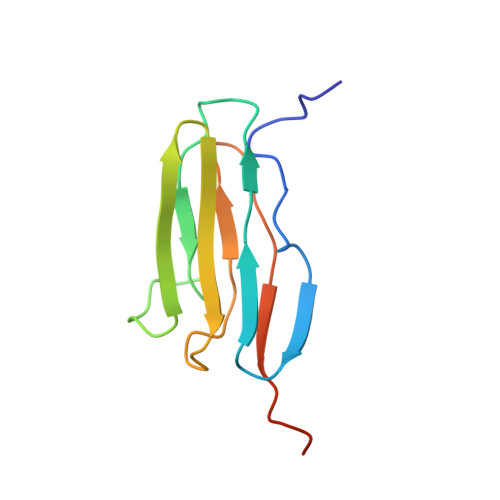The N-terminus of obscurin is flexible in solution.
Mauriello, G.E., Moncure, G.E., Nowzari, R.A., Miller, C.J., Wright, N.T.(2023) Proteins 91: 485-496
- PubMed: 36306263
- DOI: https://doi.org/10.1002/prot.26442
- Primary Citation of Related Structures:
7R67, 7R68 - PubMed Abstract:
The N-terminal half of the giant cytoskeletal protein obscurin is comprised of more than 50 Ig-like domains, arranged in tandem. Domains 18-51 are connected to each other through short 5-residue linkers, and this arrangement has been previously shown to form a semi-flexible rod in solution. Domains 1-18 generally have slightly longer ~7 residue interdomain linkers, and the multidomain structure and motion conferred by this kind of linker is understudied. Here, we use NMR, SAXS, and MD to show that these longer linkers are associated with significantly more domain/domain flexibility, with the resulting multidomain structure being moderately compact. Further examination of the relationship between interdomain flexibility and linker length shows there is a 5 residue "sweet spot" linker length that results in dual-domain systems being extended, and conversely that both longer or shorter linkers result in a less extended structure. This detailed knowledge of the obscurin N terminus structure and flexibility allowed for mathematical modeling of domains 1-18, which suggests that this region likely forms tangles if left alone in solution. Given how infrequently protein tangles occur in nature, and given the pathological outcomes that occur when tangles do arise, our data suggest that obscurin is likely either significantly scaffolded or else externally extended in the cell.
- Department of Chemistry and Biochemistry, James Madison University, Harrisonburg, Virginia, USA.
Organizational Affiliation:
















